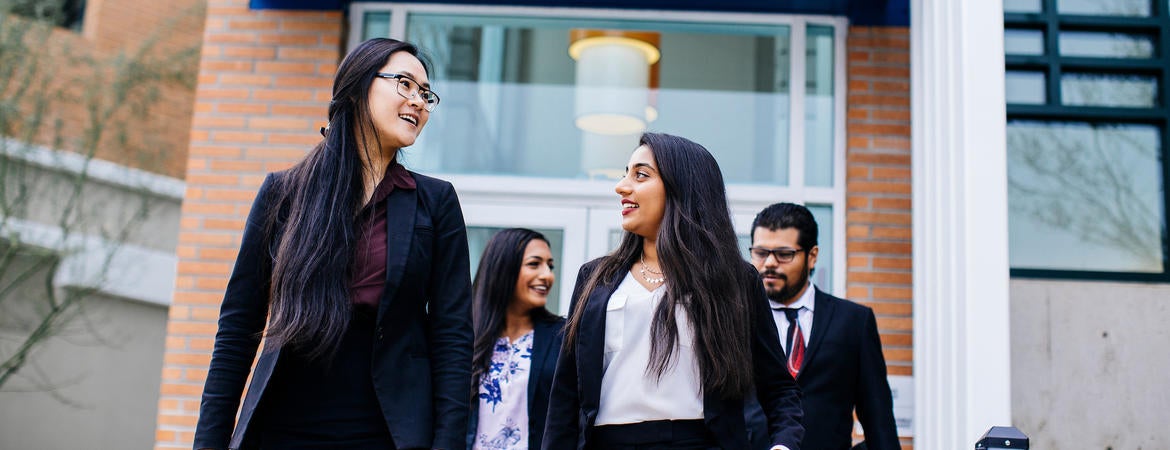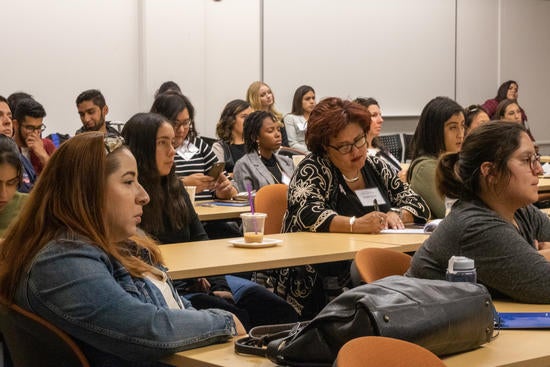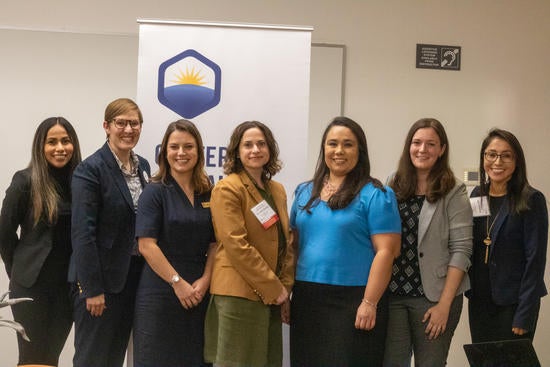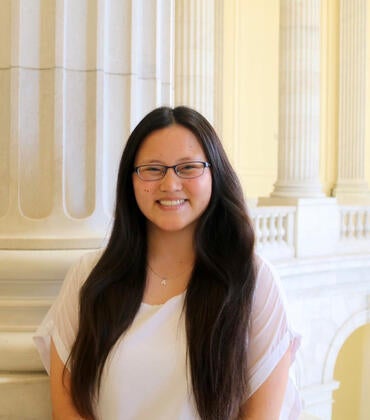
A new report from researchers at the University of California, Riverside, sheds light on the more than 2.3 million women who call the Inland Empire home.
Focusing on Riverside and San Bernardino counties, “State of Women in the Inland Empire” is the latest installment in an ongoing series released by UC Riverside’s Center for Social Innovation. Previous reports covered immigrants and work in the region.
The report was produced in partnership with the university’s Women’s Resource Center and the Women’s Foundation of California. It is the first comprehensive assessment of women in the region, approaching the experience of womanhood through a variety of intersectional lenses related to race, ethnicity, and socioeconomic status.
At an event to celebrate its launch on Oct. 30, Women’s Foundation of California CEO Surina Khan said the data contained within the report is especially critical because it allows local leaders to “establish a benchmark” from which to plot and measure future growth in the region.
“This is so important for so many reasons,” Khan added of the report. “We need to know where we’re coming from so we can chart a path forward to progress.”
Denise Davis, director of the UC Riverside Women’s Resource Center, echoed Khan’s sentiments, describing the report as “a tangible guidepost” that simultaneously “signifies the work that still needs to be done” to level the playing field for women in the region.
When it comes to how much Inland Empire women earn compared to men, for instance, the playing field remains dramatically uneven. Women in the region earn just 68 cents for every dollar earned by men — a gap that becomes even more significant when race and ethnicity are added to the mix.
“Native American and Latina women have the largest earnings gaps, making only 36 and 42 cents, respectively, on the dollar when compared to white men,” the report’s authors wrote. In the Inland Empire, where 51% of women identify as Latina, the consequences of such a gap are particularly pronounced.
What’s more, about 45% of working-age Inland Empire women participate in the labor force compared to roughly 67% of men in the region. According to the report, labor force participation rates for women in both counties are lower than those in the rest of Southern California and statewide.
Stephanie DeMora, a doctoral candidate in UC Riverside’s political science department who co-authored the report and presented its key findings at the launch event, said the gap in labor force participation can’t be explained by women simply choosing not to work.
Instead, she said, women in the region typically face many more barriers than men to employment, such as having to care for children, aging family members, or other loved ones — or finding and paying for high-priced care. This can effectively keep them from participating in the labor force all together, or limit their participation to part-time or seasonal work.
Likewise, the report emphasizes pronounced gender gaps in political representation throughout the region, noting women are underrepresented in almost every level of elected office in the Inland Empire. In fact, only on San Bernardino County’s school boards do women outnumber men.
Overall, “women hold just 26% of Inland Empire city council positions, and 21% of county leadership roles,” the report’s authors noted. The report also cited data from a recent survey conducted by the Center for Social Innovation and Southern California News Group, which showed women are less likely than men to consider running for office, and that they face a steeper climb in convincing male voters in the Inland Empire that electing more women to local office is an important priority.
Still, there are some reasons to be optimistic. Women in the Inland Empire have higher voter registration and turnout rates than men, according to analysis by Yiming Shao, a UCR doctoral candidate in political science. While women might not necessarily be winning at a higher rate, more of them than ever are running for office in the region as of 2018.
In addition, the report credits several local organizations and initiatives — such as Ignite, which has a chapter at UC Riverside, and the Women’s Resource Center’s annual Persist conference — for inspiring and training women in the region to become more politically engaged.
Jennifer Merolla, a UCR political science professor who worked on the report, said during the launch event that it’s important to work to improve women’s representation in government because “priorities change when women are in office.”
Public Policy Institute of California data seems to back up Merolla’s claim. In a 2018 survey, the institute discovered, among other findings, that women respondents were more likely than men to think of the state of housing affordability in the region as a big problem. They were also more likely to consider climate change a major threat and to show concern about rising sea levels, suggesting issues like these might receive more attention if women were in office.
So too might the issue of mental health. Women, the researchers wrote, report higher rates of psychological distress than men in the Inland Empire. And while women in the region are less likely than men to experience chronic illness, they nonetheless suffer from high rates of asthma, diabetes, high blood pressure, and heart disease.
Other topics covered in the report include the history of women in the Inland Empire, educational attainment, child care affordability, poverty, health insurance coverage, and domestic violence. The report ends with an exploration of promising organizations and initiatives designed to address these issues in the region, as well as several policy recommendations that could improve conditions for local women.
“The Inland Empire has a great need for additional resources from both government and philanthropy,” the report’s authors concluded. “More resources and funding would help our region build its capacity to address the needs outlined in this report. The needs of women, especially women and families of color, in the region are significant.”
“State of Women in the Inland Empire” was made possible by support from the California Wellness Foundation, James Irvine Foundation, and Weingart Foundation.
More about the Center for Social Innovation: Housed within UCR’s School of Public Policy, the Center for Social Innovation aims to provide a credible research voice that spurs civic leadership and policy innovation. The center is a catalyst for collaborative projects that boost collective impact — all with the primary goal of shifting away from a “problem” narrative to an “opportunity” narrative for marginalized communities and localities.





